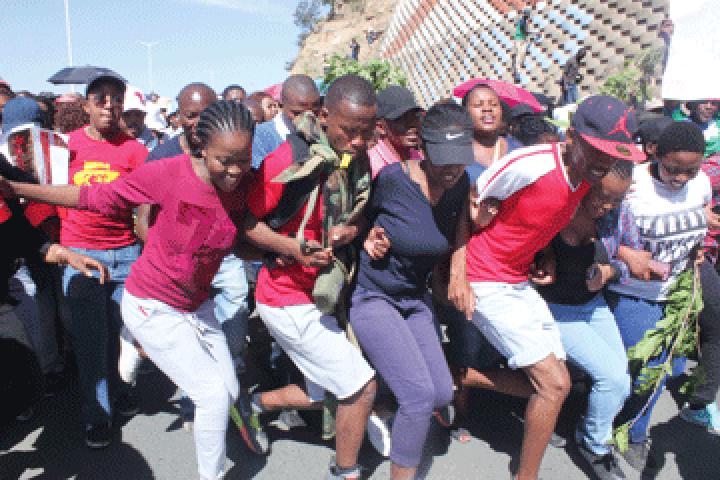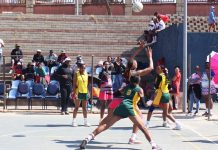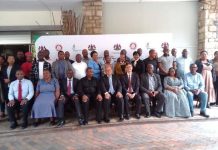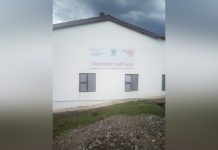Africa-Press – Lesotho. Tertiary students want the National Manpower Development Secretariat (NMDS) to increase their monthly food allowances by at least M500 which would bring the payout from M1,100 to M1,600.
They also want to see students from the National University of Lesotho (NUL)’s Institute of Extra Mural Studies (IEMS) getting the same benefits as students at other tertiary institutions.
In a letter to Development Planning Minister Selibe Mochoboroane dated May 21, 2021, a copy of which Public Eye has seen, a group of members of different institutions’ Student Representative Councils (SRCs) said IEMS students were excluded from a lot of benefits.
The letter, signed by Reatlehile Makateng on behalf of all tertiary students, reads: “My name is Reatlehile Makateng, the SRC president at NUL and appearing herein on behalf of all Lesotho tertiary students, as in all the SRCs of Lesotho tertiary institutions are united on this matter.
“It appears that in all these Lesotho tertiary institutions, students are receiving M1,100 as food allowance except IEMS students who do not receive anything at all,” he said.
“Honourable Minister, may we humbly bring to your honourable office’s attention the fact that food and cosmetics prices have risen so badly that M1,100 is no longer sufficient to cover all the costs,” he added.
Makateng told Mochoboroane that food prices had already risen considerably prior to the Covid-19 pandemic and “now with the pandemic, prices have escalated so badly that we barely survive on M1,100”.
He said IEMS students suffered indescribable hardship. “We just do not have words to explain the difficulties that IEMS students, who do not receive any food allowance at all, are living in,” Makateng said.
He added: “With this we humbly request a raise of M500 to make food allowance M1,600 across all the institutions inclusive of IEMS who were left aside in the food allowances.
” The Covid-19 pandemic has disrupted agricultural output and supply chains globally, exacerbating food price increases.
The Food and Agriculture Organisation (FAO)’s Food Price index surged again in April this year, climbing 1.7 percent from March and as much as 30.8 percent above the same period last year.
The increase marked the 11th consecutive monthly rise in the value of the FFPI to its highest level since May 2014. The April rise was led by strong increases in the prices of sugar, followed by cooking oils, meat, dairy and cereals – all key for students to meet their daily basic food needs.
FFPI is a measure of the monthly change in international prices of a basket of food commodities. Makateng confirmed to Public Eye on Wednesday this week that tertiary students had submitted a letter of demand to Mochoboroane.
“The Minister called us to a meeting on Wednesday this week,” he said.
“He told us that parliament has already approved the ministry’s budget for the current financial year and that budget is insufficient to cover the things we have asked for. In short, he rejected all the demands,” he added.
The students’ letter was copied to: the director of NMDS, Florina Rakeketsi; Ministry of Development Planning’s Principal Secretary (PS), Sello Tšukulu; PS for Higher Education in the Ministry of Education, Dr John Oliphant; and, Minister of Education and Training, Ntlhoi Motsamai.
Tšukulu also confirmed to this publication that a meeting between members of various institutions’ SRCs and Mochoboroane was held on Wednesday this week but could not comment further saying he was attending a virtual meeting.
Makateng also stated in the letter that all tertiary students needed at least M4,500 at the beginning of each academic year so that they could buy laptops.
“We looked up and made a research whereby we found that the cheapest laptop that can still assist in doing the school work is M4,500. This is the Intel Celeron laptop of most of the brands including HP, Lenovo, Packard Bell, Dell, etc. ,” he said.
The students had also asked the minister to ensure that government provides sponsorship for students studying at other tertiary institutions which are currently not covered by the NMDS.
“We humbly request that IEMS and Institute of Development Management (IDM) programmes be given sponsorship at diploma level just like other colleges, including diploma programmes of NUL, which are currently not sponsored,” the letter states.
They also requested government to provide them with data to enable them to study online. “Online learning is costly when it comes to data. We request the government to assist through your ministry,” Makateng said in the letter.
“To subsidise costs, the government can negotiate with the internet providers to subsidise the cost of data for students and then the government would pay for data as a lumpsum or opt to give students data allowance so that they may pay it for themselves,” he added.
About three-quarters of tertiary students, according to the World Bank report, Kingdom of Lesotho: Education Public Expenditure Review, published in March 2019, receive bursaries that fund both tuition and accommodations.
Graduates are supposed to repay the interest-free loans on a sliding scale, depending on whether they are employed by the government (in which case they would repay 50 percent) or in a private sector job in Lesotho (which would attract a 65 percent repayment).
Those employed abroad are supposed to repay 100 percent of the bursary that they would have received if they had studied in Lesotho. “Actual repayments represent only about four percent of the annual outlays, not counting administrative costs,” read the World Bank report.
The tertiary bursary loans fall under the NMDS in the Ministry of Development Planning. The bursary scheme, the World Bank said, offers around 17,300 bursaries to students studying in higher education institutions, but only four percent of the funds is recovered.
Around 400 of these bursaries go to students studying in South Africa, ranging in value between M40,000 and M60,000 per student per year, whereas in Lesotho far smaller bursaries are paid, ranging between M7,000 and M60,000.
These bursaries amounted to M705.7 million in 2013/14, and dropped somewhat to M678.5 million, and then to M661.6 million in the following two fiscal years.
“When bursary scheme spending is included in tertiary education expenditure, the state spends much more on a tertiary than on a secondary student,” World Bank said.
“The country becomes the highest spender on tertiary education when the loan bursaries are added. As only a small portion of these loans are recovered, it makes sense to regard the loan bursaries as part of current spending,” it added.
For More News And Analysis About Lesotho Follow Africa-Press






